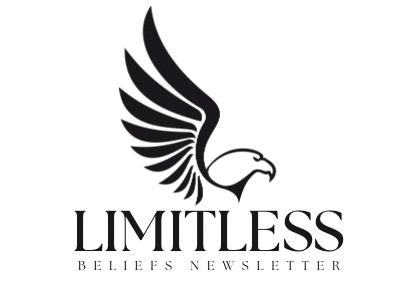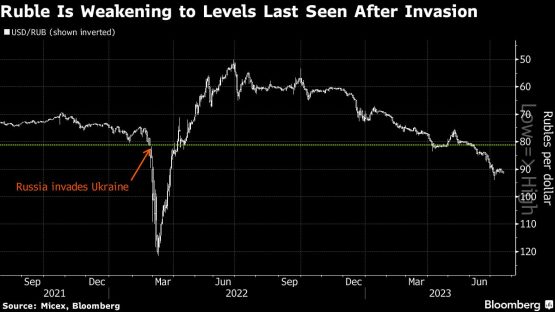Russia raised interest rates for the first time since emergency measures taken after the invasion of Ukraine almost 17 months ago, delivering a bigger increase than forecast by economists.
The central bank on Friday lifted its benchmark to 8.5% from 7.5%. Almost all economists surveyed by Bloomberg expected a rate increase, with forecasts ranging between a hike of 25 and 75 basis points. Goldman Sachs Group was the lone dissenter predicting a hold.
A weaker ruble accelerated the timeline for monetary tightening after months of warnings by the central bank that higher rates were on the way in response to inflationary risks from heavy government spending, sanctions and labor shortages caused by the call-up of men to fight in Ukraine.
A failed mutiny in June further thrust the ruble into the spotlight by adding to pressure from a deterioration in foreign trade that’s turned it into one of the worst performers this year in emerging markets against the dollar.

The decision to lift rates ends the longest pause in more than seven years by the central bank, which hasn’t adjusted rates since six rounds of easing ended in September. It last hiked the benchmark days after the invasion with an emergency increase to 20%, the highest in almost two decades, as unprecedented international sanctions battered Russia’s economy and assets.
What Bloomberg Economics Says…
“The rate hike is unlikely on its own to prevent further ruble depreciation, in view of the strong capital outflows and diminished support for the currency from the country’s current-account surplus.”
—Alexander Isakov, Russia economist.
The armed rebellion by Wagner mercenaries that briefly threatened President Vladimir Putin’s power carries the risk of triggering further outflows of money at a time when falling energy earnings and a recovery in imports drain the economy of hard currency.
It’s a prospect that could be a drag on the ruble in the months to come. The Russian currency has already lost about 18% this year, with more than a third of the depreciation coming after Wagner’s attempted march to Moscow.
Three-month implied volatility for the currency, a gauge of anticipated moves, is also the world’s highest.
Though Bank of Russia Governor Elvira Nabiullina has called the ruble’s floating exchange rate “a blessing” for the economy, the currency’s retreat is making imports more expensive as annual price growth approaches the central bank’s 4% target.
Inflation expectations for the next 12 months — a key concern for the central bank — exceeded 11% in July with the sharpest increase in almost a year.
Given the uncertainty around inflation and the exchange rate, investors have recently dumped ruble government bonds in anticipation of a policy pivot.
Price pressures are set to remain elevated for most of the second half of this year, creating a window for further increases at the next three policy meetings, according to Sofya Donets, an economist at Renaissance Capital.
“The acceleration of price growth amid the unexpected scale of the ruble’s weakening has made a rate hike inevitable,” Donets said in a note before Friday’s decision.
© 2023 Bloomberg


